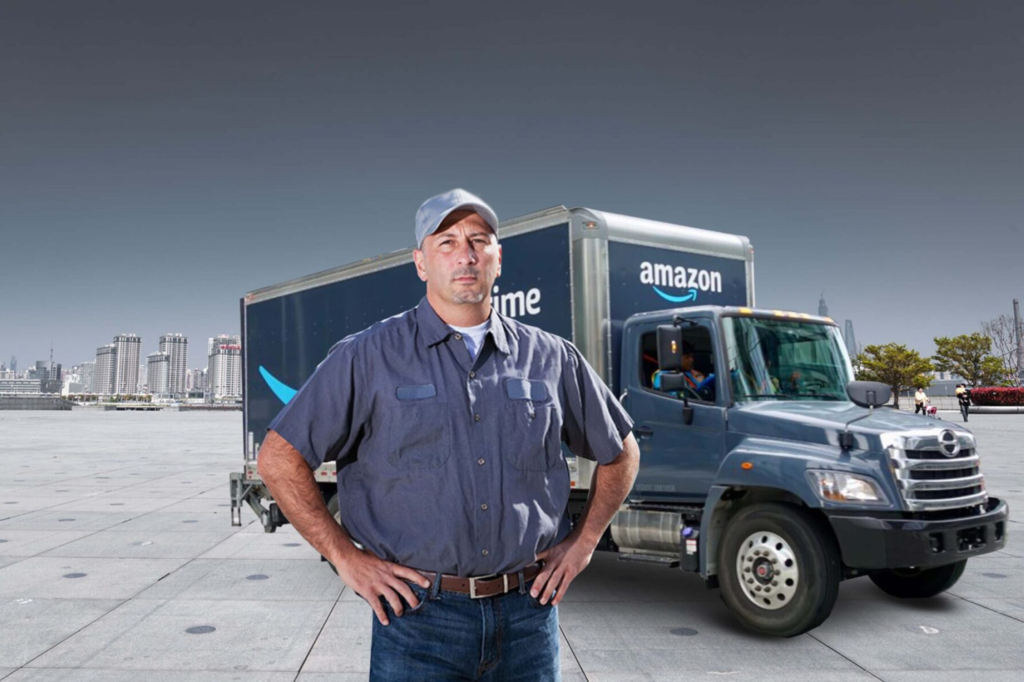If you’re an Amazon Delivery Service Partner (DSP) looking to grow your business, choosing the right vehicles is like picking the right team for your championship game. The right fleet doesn’t just carry packages; it’s the backbone of your success.
Selecting the perfect vehicle will affect your operational efficiency, driver satisfaction, and ultimately, your bottom line. With so many choices available, how do you make the right decision? Let’s walk through the key factors you should consider to ensure you’re making the right choice.
Understanding Your Needs: What Does Your Fleet Require?
Before diving into the types of vehicles, start by evaluating your fleet’s specific needs. Ask yourself:
- How many packages will I be delivering each day?
- What type of area will my fleet be serving—urban or suburban?
- How far do my drivers travel in a typical day?
These questions set the foundation for your vehicle choices. For example, a DSP in a dense city area may need smaller, more nimble vehicles to navigate narrow streets, while a suburban delivery route may benefit from larger vehicles capable of handling bulkier loads.
Delivery Volume: If your fleet manages high delivery volumes, a larger vehicle, such as a box truck, maybe a good fit. On the other hand, if your deliveries vary in size and frequency, a versatile cargo van might work better. Consider the daily package volume you expect to handle, as it directly impacts the vehicle’s cargo capacity and how efficiently it can be loaded.
Delivery Radius: If your fleet covers longer distances between the fulfillment center and customers, you’ll need a vehicle with a higher range or fuel efficiency. For shorter urban deliveries, a vehicle with great maneuverability and ease of parking might be a bigger priority.
Urban vs. Suburban Delivery
Scenario 1: The Urban Fleet Dilemma
Imagine your fleet operates in a bustling city. You’re constantly faced with traffic, narrow streets, and limited parking. In this scenario, a Sprinter Van could be your best bet. Sprinter Vans offer a balance of fuel efficiency, ample cargo space, and maneuverability, making them ideal for urban environments where space is tight, but efficiency is key.
On the other hand, if sustainability is a concern, you could look at Electric Vehicles (EVs). Although their range might be a limiting factor, electric vehicles have proven to be highly efficient in urban delivery, where frequent stops and starts are common. Plus, with the growing emphasis on eco-friendly practices, an EV fleet might not just save costs in the long run but could also bolster your reputation as an environmentally responsible DSP.
Scenario 2: Handling High-Volume Suburban Routes
If your fleet handles large delivery volumes and operates in a suburban area, you may want to explore Box Trucks. They’re ideal for carrying high-capacity loads and larger packages, reducing the number of trips you need to make. However, be mindful that box trucks are less agile, so ensure your drivers are prepared for operating in more confined areas.
Types of Delivery Vehicles:
|
Vehicle Type
|
Specifications
|
Uses
|
|---|---|---|
|
Cargo Van
|
* Medium-sized (typically 12-16 feet long)
* Enclosed cargo area * Various configurations (e.g., high-roof, extended length) * Capacity: Varies depending on configuration, but can accommodate several hundred packages. * Engines: Often diesel or gasoline. |
Suitable for a wide range of delivery needs, including small packages, groceries, and furniture.
|
|
Box Truck
|
* Large (typically 20-26 feet long)
* Enclosed cargo area * Capacity: Can accommodate thousands of packages, depending on size and configuration. * Engines: Typically diesel. |
It is ideal for high-volume deliveries of bulky items, such as appliances or furniture.
|
|
Sprinter Van
|
* Medium-sized (similar to cargo vans in length)
* Enclosed cargo area * Fuel-efficient * Capacity: Typically accommodates hundreds of packages. * Engines: Often diesel. |
It offers a balance of cargo capacity and maneuverability, making it suitable for various delivery types.
|
|
Electric Delivery Van
|
* Size varies depending on model, but is generally comparable to gasoline-powered cargo vans.
* Battery-powered, zero-emissions. * Capacity: Can vary, but often similar to gasoline-powered vans. * Range: Varies depending on model, but typically lower than gasoline-powered vans. |
It is increasingly popular for urban deliveries due to environmental benefits and potential cost savings.
|
|
Hybrid Delivery Van
|
* Size varies depending on model, but is generally comparable to gasoline-powered cargo vans.
* Utilizes both electric and gasoline engines to maximize fuel efficiency. * Capacity: Can vary, but often similar to gasoline-powered vans. * Fuel Efficiency: Typically higher than traditional gasoline-powered vans. |
Offers a balance of performance and fuel economy, particularly for longer routes.
|
Key Factors to Consider When Choosing a Vehicle
Once you’ve got a sense of what kind of environment your fleet will operate in, it’s time to look at specific factors that will influence your decision:
Cargo Capacity: Your vehicle must accommodate the size and volume of packages you deliver. Consider cubic feet or payload capacity to ensure your vehicles can handle the workload without constantly returning to the warehouse.
Fuel Efficiency: Fuel is one of the biggest ongoing costs of fleet management. Choosing vehicles with good fuel economy, especially if you’re covering long distances, can help you save significantly over time. Vehicles like Hybrid Vehicles offer a great compromise between fuel efficiency and performance, especially for longer routes.
Driver Experience and Safety: Happy drivers are efficient drivers. Look for vehicles that offer ergonomic seating, great visibility, and essential safety features like lane assist or rear-view cameras. Vehicles that prioritize comfort and safety are more likely to attract and retain drivers—an often overlooked but crucial part of fleet management.
Maintenance and Repair Costs: Different vehicles have different long-term costs associated with maintenance. Before purchasing, research each vehicle’s reputation for reliability and the cost of parts and repairs. Overlooking this aspect could lead to frequent breakdowns and expensive repairs that quickly erode your profits.
Environmental Impact: More and more, businesses are considering their carbon footprint. If reducing emissions is a priority, you might want to opt for electric or hybrid vehicles. While the upfront costs might be higher, they often pay off in long-term fuel savings and, in some regions, tax incentives for eco-friendly businesses.
Additional Considerations for Your Amazon DSP Fleet
Choosing the right vehicle also involves considering costs outside of purchasing. Here are some extra factors to keep in mind:
Insurance Costs: Different vehicles come with different insurance premiums. Be sure to compare insurance rates for each type of vehicle you’re considering.
Federal and Local Regulations: Make sure that your vehicle choices comply with emissions regulations and other legal requirements for delivery vehicles in your area.
Vehicle Financing Options: Unless you’re buying your fleet outright, financing is a big part of the decision. Some vehicles may have better loan options or leasing deals, so make sure to explore financing that works best for your business’s financial health.
Conclusion: Making the Smart Choice
Choosing the right vehicles for your Amazon DSP fleet is a multi-faceted decision that should be approached thoughtfully. At MetroMax, we specialize in DSP operations and are committed to helping you streamline your fleet procurement, maintenance, and other operational aspects for optimal performance. By carefully assessing your specific needs—whether it’s high cargo capacity, fuel efficiency, or environmental impact—and evaluating the various vehicle types, you can ensure your fleet operates smoothly, efficiently, and cost-effectively.
The goal is simple: pick the right tool for the job. Whether it’s cargo vans for their versatility, electric vehicles for their eco-friendliness, or box trucks for high-volume delivery routes, there’s a vehicle that perfectly fits your requirements. With our expertise, we guide you in selecting the best options for your fleet and ensure seamless integration into your operations. With the right fleet in place, you’ll be well on your way to running a more efficient, profitable, and sustainable Amazon DSP operation.
To learn more, book a consultation with our DSP expert.














